Catherine Stoddard in Fox6:
 Every year, the Association for the Study of African American Life and History (ASALH) chooses the theme for Black History Month. This year’s theme is “Black Resistance,” specifically calling out the legacy of resistance through politics, the arts, society and education. Black Americans “have resisted historic and ongoing oppression in all forms, especially the racial terrorism of lynching, racial pogroms, and police killings since our arrival upon these shores,” said the ASALH, an organization dedicated to researching and promoting achievements by Black Americans and other peoples of African descent.
Every year, the Association for the Study of African American Life and History (ASALH) chooses the theme for Black History Month. This year’s theme is “Black Resistance,” specifically calling out the legacy of resistance through politics, the arts, society and education. Black Americans “have resisted historic and ongoing oppression in all forms, especially the racial terrorism of lynching, racial pogroms, and police killings since our arrival upon these shores,” said the ASALH, an organization dedicated to researching and promoting achievements by Black Americans and other peoples of African descent.
How did Black History Month start?
Carter G. Woodson, a founder of the ASALH organization, first came up with the idea of the celebration that became Black History Month. Woodson, born in 1875 to recently freed Virginia slaves, went on to earn a Ph.D. in history from Harvard. He worried that Black children were not being taught about their ancestors’ achievements in American schools in the early 1900s. “Woodson fervently believed that Black people should be proud of their heritage and all Americans should understand the largely overlooked achievements of Black Americans,” the NAACP states on its website. Woodson originally came up with the idea of Negro History Week to encourage black Americans to become more interested in their own history and heritage and it was established in 1926.
More here. (Note: Throughout February, at least one post will be dedicated to Black History Month. The theme for 2023 is Black Resistance. Please send us anything you think is relevant for inclusion)

 At first glance there is something forcibly piteous about the title of Colin Grant’s book, I’m Black So You Don’t Have to Be. It reads as though there is something inherently burdensome about being Black. It isn’t until you read the full quote – “I’m black so you can do all of those white things. I’m black so you don’t have to be” – which comes from his sometime mentor and “ribald philosopher” Uncle Castus, that you understand it is not meant as a display of martyrdom, but rather an insult. It’s a jab at the privileges of the children of the Windrush generation who, hell-bent on being accepted by British society, have left the labour of Blackness to their parents.
At first glance there is something forcibly piteous about the title of Colin Grant’s book, I’m Black So You Don’t Have to Be. It reads as though there is something inherently burdensome about being Black. It isn’t until you read the full quote – “I’m black so you can do all of those white things. I’m black so you don’t have to be” – which comes from his sometime mentor and “ribald philosopher” Uncle Castus, that you understand it is not meant as a display of martyrdom, but rather an insult. It’s a jab at the privileges of the children of the Windrush generation who, hell-bent on being accepted by British society, have left the labour of Blackness to their parents.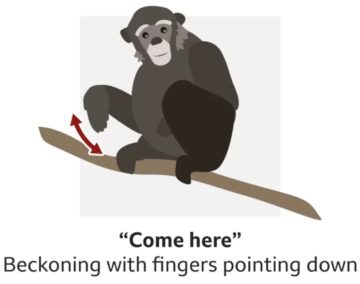 Humans share elements of a common language with other apes, understanding many gestures that wild chimps and bonobos use to communicate.
Humans share elements of a common language with other apes, understanding many gestures that wild chimps and bonobos use to communicate.
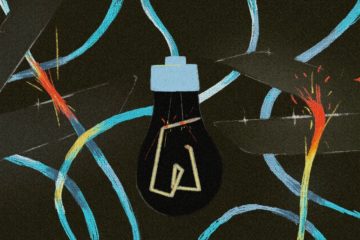 In May of this past year, I
In May of this past year, I The United States’ most important smut-buster, Anthony Comstock, he of the muttonchop sideburns and perpetual scowl, was never at a loss for florid words. Describing the impact of pornography in 1883, he likened it to a cancer, one tending toward “poisoning the nature, enervating the system, destroying self-respect, fettering the will-power, defiling the mind, corrupting the thoughts, leading to secret practices of most foul and revolting character, until the victim tires of life, and existence is scarcely endurable.”
The United States’ most important smut-buster, Anthony Comstock, he of the muttonchop sideburns and perpetual scowl, was never at a loss for florid words. Describing the impact of pornography in 1883, he likened it to a cancer, one tending toward “poisoning the nature, enervating the system, destroying self-respect, fettering the will-power, defiling the mind, corrupting the thoughts, leading to secret practices of most foul and revolting character, until the victim tires of life, and existence is scarcely endurable.” On a cold, uncharacteristically dry London day in September 1931, a short, stocky man with slicked-back hair, a piercing gaze, and a hell of a lot of nerve walked along Storey’s Gate Street. He entered Central Hall, Westminster, a large assembly place near Westminster Abbey. It’s hard to imagine that this man, a thirty-seven-year-old Belgian professor of physics, did not feel some trepidation.
On a cold, uncharacteristically dry London day in September 1931, a short, stocky man with slicked-back hair, a piercing gaze, and a hell of a lot of nerve walked along Storey’s Gate Street. He entered Central Hall, Westminster, a large assembly place near Westminster Abbey. It’s hard to imagine that this man, a thirty-seven-year-old Belgian professor of physics, did not feel some trepidation.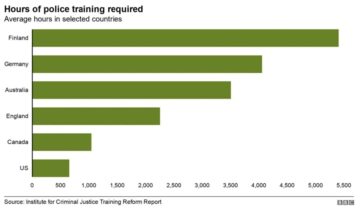 The video of the
The video of the  Here are three details I enjoy about Ace, my buddy who resides in Boulder, Utah, a speck of a town (population two hundred thirtyish) that floats atop the creamy cross-bedded Navajo Sandstone, the gargantuan petrified dunes of an Early Jurassic erg: he’s devoted the bulk of two decades to trekking the GSENM hinterlands—heating water with a twiggy fire, sipping tea, casting consciousness to the stars, reeling consciousness back in, striking camp, pushing forward; he’s eager to direct attention to the Latin phrase Solvitur ambulando (“It is solved by walking”) engraved on his pocketknife and, furthermore, assumes the phrase’s “it” requires no explanation; he’s got dogs on the rug farting and a pot of tomato sauce on the stove bubbling when—excited, hungry, fatigued from the drive (Boulder was the last municipality in the lower forty-eight to receive mail by mule and remains a long haul from anywhere)—Sophia and I arrive.
Here are three details I enjoy about Ace, my buddy who resides in Boulder, Utah, a speck of a town (population two hundred thirtyish) that floats atop the creamy cross-bedded Navajo Sandstone, the gargantuan petrified dunes of an Early Jurassic erg: he’s devoted the bulk of two decades to trekking the GSENM hinterlands—heating water with a twiggy fire, sipping tea, casting consciousness to the stars, reeling consciousness back in, striking camp, pushing forward; he’s eager to direct attention to the Latin phrase Solvitur ambulando (“It is solved by walking”) engraved on his pocketknife and, furthermore, assumes the phrase’s “it” requires no explanation; he’s got dogs on the rug farting and a pot of tomato sauce on the stove bubbling when—excited, hungry, fatigued from the drive (Boulder was the last municipality in the lower forty-eight to receive mail by mule and remains a long haul from anywhere)—Sophia and I arrive.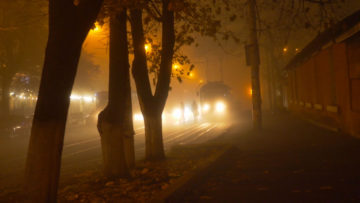 1990’s The Asthenic Syndrome takes us to Odesa, too, but this is an Odesa at the fraying edge of a Soviet time-space where, significantly, we never see the sea. The film is shot in places that suggest a borderland, an edge, a wobble: construction sites, mirrors, photographs, headstones, film screenings, cemeteries, a dog pound, a hospital ward, a soft-porn shoot. This in-between sense is temporal, as well: Muratova notes that she “had the great fortune of working in a period between the dominance of ideology and the dominance of the market, a period of suspension, a temporary paradise.” As with the asthenic syndrome itself (a state between sleeping and waking), the film is a realization of inbetweenness, an assembly of frictions and crossover states we feel through form: through Muratova’s use of juxtaposition; through her uncanny overpatterning of echoes and coincidences; through the shifts of register between documentary and opera. The film doesn’t proceed so much as weave itself in front of us, in a dazzling ivy pattern of zones and occurrences. You could call it late-Soviet baroque realism.
1990’s The Asthenic Syndrome takes us to Odesa, too, but this is an Odesa at the fraying edge of a Soviet time-space where, significantly, we never see the sea. The film is shot in places that suggest a borderland, an edge, a wobble: construction sites, mirrors, photographs, headstones, film screenings, cemeteries, a dog pound, a hospital ward, a soft-porn shoot. This in-between sense is temporal, as well: Muratova notes that she “had the great fortune of working in a period between the dominance of ideology and the dominance of the market, a period of suspension, a temporary paradise.” As with the asthenic syndrome itself (a state between sleeping and waking), the film is a realization of inbetweenness, an assembly of frictions and crossover states we feel through form: through Muratova’s use of juxtaposition; through her uncanny overpatterning of echoes and coincidences; through the shifts of register between documentary and opera. The film doesn’t proceed so much as weave itself in front of us, in a dazzling ivy pattern of zones and occurrences. You could call it late-Soviet baroque realism. SAN DIEGO — White caps were breaking in the bay and the rain was blowing sideways, but at Naval Base Point Loma, an elderly bottlenose dolphin named Blue was absolutely not acting her age. In a bay full of dolphins, she was impossible to miss, leaping from the water and whistling as a team of veterinarians approached along the floating docks. “She’s always really happy to see us,” said Dr. Barb Linnehan, the director of animal health and welfare at the National Marine Mammal Foundation, a nonprofit research organization. “She acts like she’s a 20-year-old dolphin.”
SAN DIEGO — White caps were breaking in the bay and the rain was blowing sideways, but at Naval Base Point Loma, an elderly bottlenose dolphin named Blue was absolutely not acting her age. In a bay full of dolphins, she was impossible to miss, leaping from the water and whistling as a team of veterinarians approached along the floating docks. “She’s always really happy to see us,” said Dr. Barb Linnehan, the director of animal health and welfare at the National Marine Mammal Foundation, a nonprofit research organization. “She acts like she’s a 20-year-old dolphin.”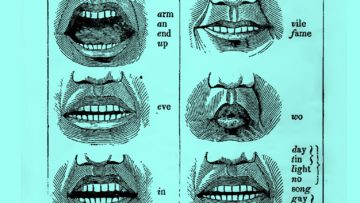 In a small apartment downtown, a group of people has gathered. There’s maybe a hundred of them, men and women, and they’re not exactly sure why they’ve gathered. Then, suddenly, a sound like the rushing of a violent wind comes down from the heavens and fills the whole house. Helpless, they watch as tongues of fire descend from the clouds, and then these tongues begin to move toward them, before finally coming to sit on their own tongues. The people try to speak with each other, to communicate their astonishment or terror or ecstasy, but each one is speaking in tongues, speaking in languages they’ve never spoken before or since. And then, sometime later, everyone involved is spectacularly martyred.
In a small apartment downtown, a group of people has gathered. There’s maybe a hundred of them, men and women, and they’re not exactly sure why they’ve gathered. Then, suddenly, a sound like the rushing of a violent wind comes down from the heavens and fills the whole house. Helpless, they watch as tongues of fire descend from the clouds, and then these tongues begin to move toward them, before finally coming to sit on their own tongues. The people try to speak with each other, to communicate their astonishment or terror or ecstasy, but each one is speaking in tongues, speaking in languages they’ve never spoken before or since. And then, sometime later, everyone involved is spectacularly martyred.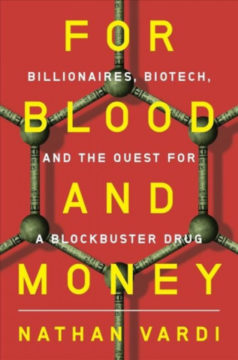 In 2011, Ahmed Hamdy
In 2011, Ahmed Hamdy In her great new book, titled Inside Siglo XXI: Locked Up in Mexico’s Largest Detention Center, author and journalist Belén Fernández writes about this underdiscussed part of the U.S. border from the on-the-ground perspective of the Tapachula immigration prison, where she was detained. In the book, and in the below interview, Belén describes how she ended up behind bars and what she witnessed and experienced, including the friendships and solidarity she had with other detainees. As she writes, “There may not be human rights in Siglo XXI, but there’s lots of humanity.” Belén has this unique ability to write in a personal, detailed, and heart-wrenching way that is often also bitingly hilarious. She also has a penchant for coupling deep geopolitical analysis of state power, particularly that of the United States, with its absurdity, often in the same sentence.
In her great new book, titled Inside Siglo XXI: Locked Up in Mexico’s Largest Detention Center, author and journalist Belén Fernández writes about this underdiscussed part of the U.S. border from the on-the-ground perspective of the Tapachula immigration prison, where she was detained. In the book, and in the below interview, Belén describes how she ended up behind bars and what she witnessed and experienced, including the friendships and solidarity she had with other detainees. As she writes, “There may not be human rights in Siglo XXI, but there’s lots of humanity.” Belén has this unique ability to write in a personal, detailed, and heart-wrenching way that is often also bitingly hilarious. She also has a penchant for coupling deep geopolitical analysis of state power, particularly that of the United States, with its absurdity, often in the same sentence. The timing of Anjuli Fatima Raza Kolb’s
The timing of Anjuli Fatima Raza Kolb’s